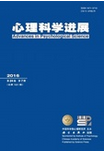Multiple Object Tracking (MOT) is mainly used to explore visual attention and memory for multiple objects in dynamic contexts. Earlier studies focused on the influencing factors and processing mechanisms of the tracking process. An increasing number of recent studies have used MOT to evaluate and train different populations, including children, the elderly, patients with neurodevelopmental conditions, drivers, athletes, video game players, and other occupational groups. In general, a trend has emerged whereby the better the performance of MOT, the better the professional performance in complex and fast dynamic contexts. Conversely, poorer performance of MOT indicates that cognitive functioning may be immature or declining. In addition, MOT can also be used as a means of cognitive training to improve the cognitive function of the elderly and patients with neurodevelopmental conditions and improve the professional performance of various occupational groups. MOT should be considered for future use as it has enormous potential as a method of evaluation and training. This can be further improved in various ways, including strengthening the simulated training of special occupational groups, expanding the target populations, combining MOT with stereoscopic vision and real scenes, taking physical activities during MOT, exploring MOT with multi-person cooperation, and using MOT for the evaluation and training of emotional and social functions.




